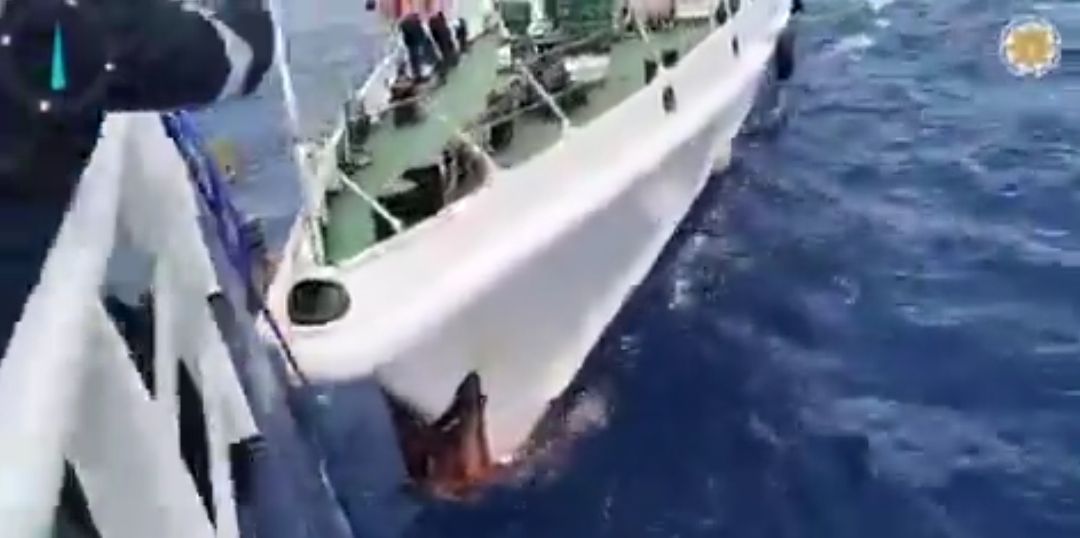Chinese ships ram, shoot water jets at BFAR vessel in WPS, says task force

There appears no sign of easing of tension in the West Philippine Sea (WPS) as Chinese navy and coast guard ships once again struck and fired water cannon at Bureau of Fisheries and Aquatic Resources (BFAR) vessel BRP Datu Sanday (MMOV 3302) during a resupply mission on Sunday, Aug. 25.
BRP Datu Sanday encountered “encountered aggressive and dangerous maneuvers” from eight Chinese vessels while operating from Hasa-Hasa (Half-Moon) Shoal to Escoda (Sabina) Shoal, according to the National Task Force for the West Philippine Sea (NTF-WPS).
Hasa-Hasa Shoal is located approximately 60 nautical miles from Rizal, Palawan, while Escoda Shoal is about 110 nautical miles away, both well within the Philippines' exclusive economic zone (EEZ).
“The actions of the Chinese vessels were aimed at obstructing the BFAR vessel's humanitarian mission to resupply Filipino fishermen with diesel, food and medical supplies,” the NTF-WPS said in a statement.
BRP Datu Sanday was traversing the tricky waters of the WPS when a People’s Liberation Army Navy (PLA-N) warship with bow number “626” and multiple China Coast Guard (CCG) ships attempted to encircle it in an apparent attempt to block the mission, the task force added.
At one point, the Chinese vessels made close perilous maneuvers which resulted in ramming of BRP Datu Sanday, it added. The Chinese vessels also blasted horns to confuse the Filipino personnel and deployed water cannons which caused the engine of the BRP Datu Sanday to fail. This prompted the Filipino authorities to terminate the humanitarian operation.
“These unprofessional, aggressive and illegal actions posed serious risks to the safety of the Filipino crew and the fishermen they were meant to serve. Despite these provocative maneuvers, the crew aboard the BFAR vessel maintains high morale and remains safe and unharmed,” the NTF-WPS said.
However, in a statement by the CCG, it accused BRP Datu Sanday of “illegally trespassing” into the waters near Xianbin Jiao, the name it calls Escoda Shoal.
“In response, the CCG took control measures against the Philippine vessel involved in the incident in accordance with law and regulations. The Philippine ship ignored stern warnings from the Chinese side and intentionally rammed into a CCG ship that was conducting normal law-enforcement activities, causing a bump; the responsibility for the incident lies entirely with the Philippine side,” it noted.
‘No rescue’
The NTF-WPS also belied claims that the CCG rescued Filipino personnel who allegedly fell overboard during the ramming.
“This misinformation serves as a clear illustration of the PRC’s [People’s Repulic of China] willingness to distort the truth and engage in disinformation to bolster its public image,” the task force said.
The NTF-WPS reiterated the Philippine government’s appeal to China to stop the “provocative actions” which “destabilize regional peace and security.”
The recent incident followed the use of flares by China against Philippine Air Force (PAF) and BFAR aircraft in three separate incidents: in Bajo de Masinloc on Aug. 8 and 19, and near Pag-asa Island on Aug. 22.